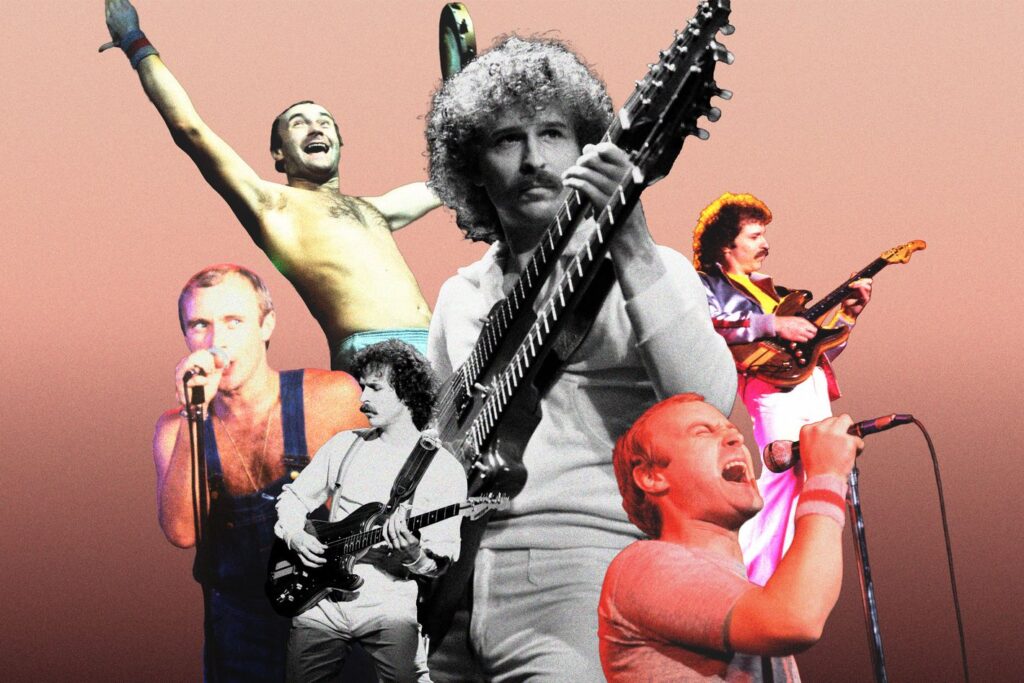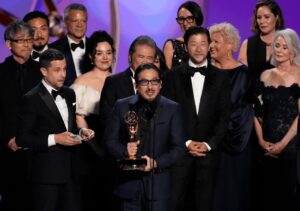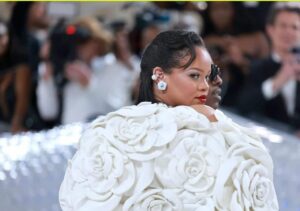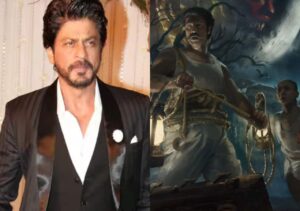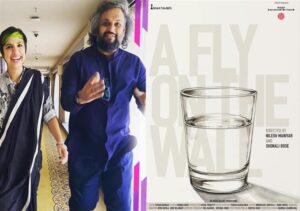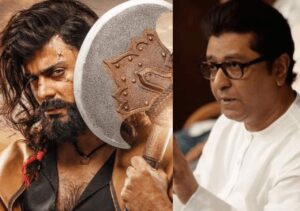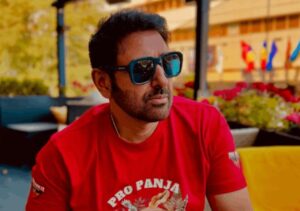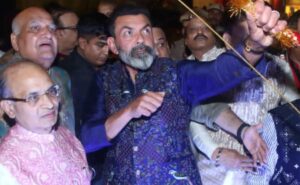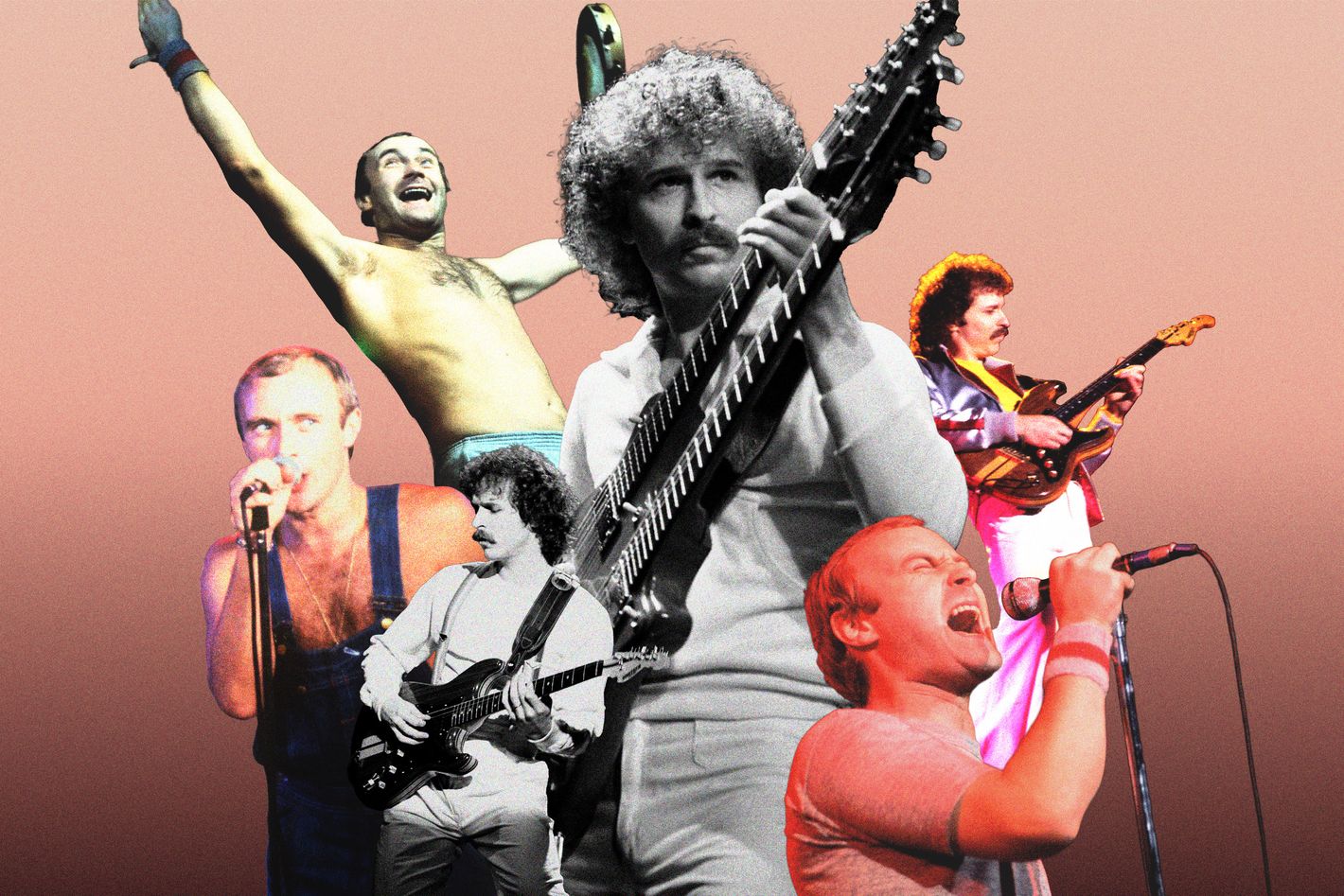
If you have two ears and heart, you’re naturally inclined to enjoy the music of Phil Collins. The man had an unimpeachable run of dominance during the 1980s — we’ll leave the “Sussudio” debate for another time — and along for the ascension was guitarist Daryl Stuermer. Chosen by Genesis to become a touring member after the departure of Steve Hackett (“They needed a guitarist to come in and duplicate what he was so masterfully doing,” Stuermer recalls), he was quietly approached by Collins when he started to consider a solo career. The two artists quickly realized that they shared a strong musical sensibility, and when Collins indeed began work on his first album, Face Value, Stuermer was recruited as his trusted sideman. He would go on to perform on every album and tour with Collins, minus his non-collaborative 1993 album, Both Sides, until Collins’s public retirement due to illness. (All while continuing to tour with Genesis until their own farewell tour.) “I didn’t know that my relationship with him was going to start in 1978 and pretty much go until 2022,” Stuermer now says. “I never thought that would happen. It’s almost like being a member of a family. I’m the only musician in the band who started with him and ended with him.”
Stuermer’s kinetic guitar work shines in the new box set for No Jacket Required, a remaster that highlights his rhythms and solos in hits such as “One More Night” and “Don’t Lose My Number.” Despite having not talked to Collins, who continues to deal with health issues, in a year, Stuermer is effusive about his old friend throughout our discussion about his best performances. “Phil has been such a wonderful person to work with,” he says. “I feel bad for his physical problems now, but at his peak, from Face Value up to Both Sides, he was a force that couldn’t be reckoned with.”
Phil Collins, Face Value (1981)
One day I was rehearsing with Genesis in Shepperton Studios, and after our rehearsal, Phil Collins asked me, “Are you going back into London? I’m going there too. I’ll take you back, but I want you to hear something.” So I was sitting in his car, and he put a cassette in. He put on this song that he called “In the Air Tonight.” It was a demo — it started out with the drum machine, and then the keyboards came in. I was sitting there thinking to myself, What is this? It sounds like a great song for Genesis. He didn’t even have the big drum fill on the song when I heard the demo, it was just a drum machine, keyboards, and vocals. I didn’t know he was a songwriter at the time, because most of his writing was working with Mike Rutherford, or the whole band would write songs together. Frankly, Mike and Tony Banks were the main writers for Genesis at that point. He finally said, “I want to do a solo album.” It kind of blew me away, because I thought it would be a great album song for the band. Little did I know it would become quite a classic hit. He also played another demo called “I Missed Again,” which was a totally different kind of song in the R&B and Motown feel. So I’m thinking, What is this album going to be?
He asked me if I’d like to do this album with him. About a year went by, because we went on a long Genesis tour. I was living in Santa Monica, and Phil booked a studio that was only about a mile from where I lived. So this is when Face Value started for me. I didn’t know where it was going to go, because it sounded so different to me. I thought, Is this going to be commercial enough? But when he did that drum fill for “In the Air Tonight,” I thought, Wow, this is really original. It’s not that it’s the most complicated drum fill in the world, but it was the most original-sounding song I’d ever heard. Phil was just a blue-collar guy, and all of a sudden he became a star.
Phil Collins, “You Can’t Hurry Love” (1982)
It’s funny, because Phil never sits down and says, “This is what I want to do.” He always thoroughly demos everything first in his house. The one thing Phil can’t play is guitar, which I’m very happy about, because then he used me on everything. I’ve always felt bad for, say, the keyboard players we had in the band. A lot of times they didn’t get a chance to play on the records because Phil would play on his demos and would keep those parts, which were fine parts, but I always felt if I was the guitar player that was listening to the demos and I couldn’t play on the actual record, I’d feel bad. But he always allowed you to bring a little bit of yourself into each song.
I always think of “You Can’t Hurry Love” for that reason, because we played the arrangement similar to the original, but I played both guitar parts in different keys than the original. Because the Supremes are all female voices, they have a much higher range, so Phil had to put it in his range. So we approached the song as if we were just going to cover it but in a different key, and it pretty much stayed true to the original. Most people who were younger thought it was an original song. That happens with occasional songs that Phil covers. In fact, Taylor Swift did. She did a cover of “I Can’t Stop Loving You,” which was on Phil’s album Testify. But, see, Phil didn’t write that song. Billy Nicholls did, but it was a totally different version. Taylor Swift said it was a Phil Collins song, and it wasn’t. That’s his impact.
Philip Bailey and Phil Collins, “Easy Lover” (1984)
Phil is a big Earth, Wind & Fire fan, so when Philip Bailey asked him to produce his solo record, he jumped on it. Philip said, “I don’t want this to be like a typical R&B record. I want this to be something that’s influenced by Phil Collins.” So Phil told him, “I’m going to use my guitar player, Daryl.” Believe it or not, “Easy Lover” was the last song we did on the record. We completed the whole album, and Phil said, “It’s just lacking something. We need to keep working.” It lacked what I’d call a “moving” hit song. So Phil, bassist Nathan East, and Philip started messing around with a piano part, and they came up with the chords to “Easy Lover.” We did it live in the studio. Once we finished most of the track, Phil said, “It needs a killer guitar solo.” I was only doing the rhythm guitar part at first, but while listening to it back in the control room, I came up with the solo. We did about four tracks of soloing, but my first take was the best. I didn’t like the way I executed the last two bars, so they took those bars from another take.
So I’m feeling pretty proud of myself, but then our great engineer, George Massenburg, asked me, “Can you double it?” And I said, “You want me to play the same thing again but double? Are you crazy?” So I listened to the track a few more times and said, “Okay, I think I can double it.” I’m playing that same guitar solo in unison with myself. It’s not like you can hear that much of it — but if you listen really carefully, you can hear that second guitar every once in a while. It’s like to say it’s sitting behind it a little bit. A lot of people liked the sound of the double guitar in the 1980s. Now you can do that with an electronic effect and you don’t have to physically double it. Phil looked over at me when I was playing and smiled and said, “Get on!” I was doing it so well that he didn’t know I was actually playing along with another guitar. I mean, every once in a while you can hear one note being a little bit longer or shorter than the last one. It was just to make it sound thicker. It was a great idea, and I really enjoyed playing on it.
Phil Collins and Marilyn Martin, “Separate Lives” (1985)
Similar to how we approached Phil’s covers, this was a rare song that was written for him by a man named Stephen Bishop. But, Phil being Phil, he makes everything sound like his own. Recording it in the studio was normal enough, but I always think of what happened a few years later. Phil asked me if I would play with him specifically for Prince Charles. His 40th-birthday party was going to be at Buckingham Palace — there would be about 500 people, and there was no press allowed. So it was just me and Phil looking around at all of these fancy people. We started playing, went through one song, and Princess Diana walked up and said, “Can you please play ‘Separate Lives’?” At that time there were already some rumors going around that she and Prince Charles were having marital problems, and we thought it was kind of interesting that she asked us to do “Separate Lives.”
So we agreed, and then performed “One More Night.” Prince Charles and Princess Diana actually danced to that one. Everybody moved aside, and they just danced to the song together. But that was a lot of fun to do. I love doing things with him where we’re alone, because I’ll just play acoustic guitar, either nylon-string or steel-string guitar, and then he’ll play piano.
Phil Collins, “Thru These Walls” (1985)
This isn’t the most popular song, but I was getting more and more experimental with my guitar playing, and “Thru These Walls” encapsulates my achievements. Phil very much encouraged playing with different effects and things like that. Prior to even being with Genesis or Phil, I worked with the composer Jean-Luc Ponty and learned a lot from him. A lot of guitarists use pedal boards now with a dozen or so pedals, but at that time, I didn’t have any effects other than a wah-wah. So getting in with a band like Genesis or an artist like Phil, all of a sudden you get much more experimental and creative in your choices.
It’s not just the notes you’re applying, it’s the sound of the notes you’re applying and how that influences the way you actually execute the song or perform it. A lot of times, you’re overdubbing on sessions and then you actually have to bring that sound to the live performance. That’s always a challenge, because on most of Phil’s records, I’m playing at least two different guitar parts, if not three. So when you play live, you have to ask yourself, Which parts are the most important parts to play? Can I even do both? For a long time, we didn’t have two guitar players in Phil’s band. I believe it was 1997 where we finally added a second guitarist. Thank God for that.
Phil Collins, “I Don’t Wanna Know” (1985)
Before we recorded No Jacket Required, Phil had me go over to England and play on the demos so he could have guitar parts on them. While I was there, I played him a song of mine — just an instrumental, because I was going to be doing a solo record by myself. I called it “F Song” at the time. So I played it for him, and he said, “I really like it. Would you mind if I write lyrics for it?” And I thought, Don’t touch my song. But, of course, if Phil’s going to write lyrics to my song, that’s an incredible thing. So I responded, “Go ahead.” He took my melody and played around with it for several weeks. The song ended up on the album, and it’s called “I Don’t Wanna Know.” I also helped him finish “Doesn’t Anybody Stay Together Anymore” and “Only You Know and I Know.” So there’s clearly a lot of “knows” in my lyrical wheelhouse.
Phil Collins, “Don’t Lose My Number” (1985)
This was a big one. Phil came up to me in the studio and said, “I’ll want a guitar solo, around 45 seconds.” The dream for any guitarist! When I do a solo, I usually don’t take a lot of tracks to do it. My best performance is, like on “Easy Lover,” usually the first, because what happens is I start knowing the song too well if I keep doing it over and over again. What I’ll do is solo maybe three times at most, and usually the first take is used and perhaps one or additional two lines from another take. The first one is always the most inspired. And that’s what went down with “Don’t Lose My Number.”
Phil Collins, “Something Happened on the Way to Heaven” (1989)
Phil had the verses worked out but didn’t know how the chorus was going to go. Then he didn’t have a bridge, so he asked me to listen to the demo to see if I could come up with something. And I did! So I got a co-writing credit. What’s funny about “Something Happened on the Way to Heaven” is it ended up having three different bass players. The first time he demoed it, he got Leland Sklar to play bass, because Leland is on some other songs on the record. Then the next time, I changed some of the chords and played bass on it myself. Then with the final version, Nathan East took over what I laid down and tweaked it. If I’ve learned anything from Phil, it’s that things always change as you go along.
More From The ‘in session’ Series
“I’m the only musician in the band who started with him and ended with him.”

